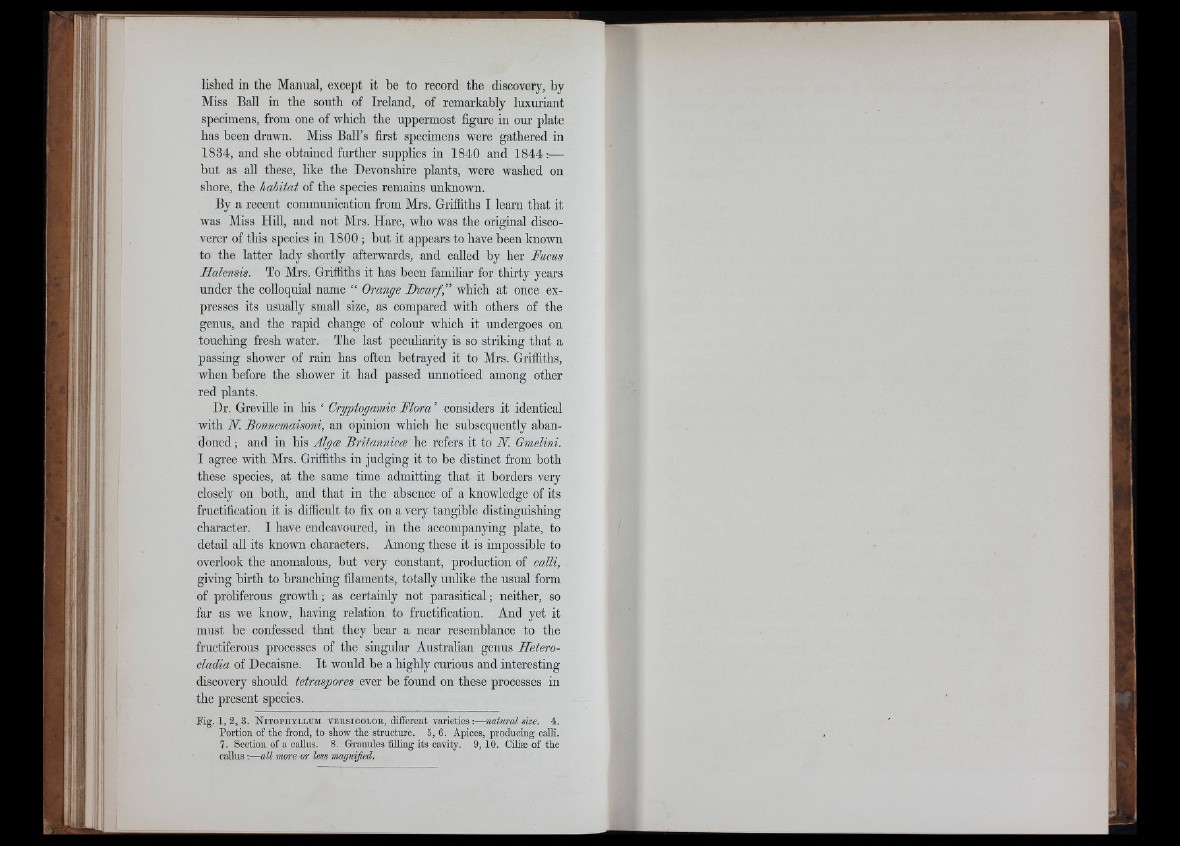
lished in the Manual, except it be to record the discovery, by
Miss Ball in the south of Ireland, of remarkably luxuriant
specimens, from one of which the uppermost figure in our plate
has been drawn. Miss Ball’s first specimens were gathered in
1834, and she obtained further supplies in 1840 and 1844 :■—
but as all these, like the Devonshire plants, were washed on
shore, the habitat of the species remains unknown.
By a recent communication from Mrs. Griffiths I learn that it
was Miss Hill, and not Mrs. Hare, who was the original discoverer
of this species in 1800 ; but it appears to have been known
to the latter lady shortly afterwards, and called by her Fucus
Halensis. To Mrs. Griffiths it has been familiar for thirty years
under the colloquial name “ Orange Bivarf,” which at once expresses
its usually small size, as compared with others of the
genus, and the rapid change of colour which it undergoes on
touching fresh water. The last peculiarity is so striking that a
passing shower of rain lias often betrayed it to Mrs. Griffiths,
when before the shower it had passed unnoticed among other
red plants.
Dr. Greville in his ‘ Cryptogamic Flora ’ considers it identical
with N. Bonnemaisoni, an opinion which he subsequently abandoned
; and in his Algm Britannicm he refers it to N. Gmelini.
I agree with Mrs. Griffiths in judging it to be distinct from both
these species, at the same time admitting that it borders very
closely on both, and that in the absence of a knowledge of its
fructification it is difficult to fix on a very tangible distinguishing
character. I have endeavoured, in the accompanying plate, to
detail all its known characters. Among these it is impossible to
overlook the anomalous, but very constant, production of calli,
giving birth to branching filaments, totally unlike the usual form
of proliferous growth; as certainly not parasitical; neither, so
far as we know, having relation to fructification. And yet it
must be confessed that they bear a near resemblance to the
fructiferous processes of the singular Australian genus Hetero-
cladia of Decaisne. It wordd be a highly curious and interesting
discovery should tetraspores ever be found on these processes in
the present species.
Fig. 1, 3, 3. N it o ph y l l u m t e k s ic o l o k , different varieties:— natural size. 4.
Portion of the frond, to show the structure. 5, 6. Apices, producing calli.
7. Section of a callus. 8. Granules fiUing its cavity. 9, 10. Ciliie of the
callus :— all more or It